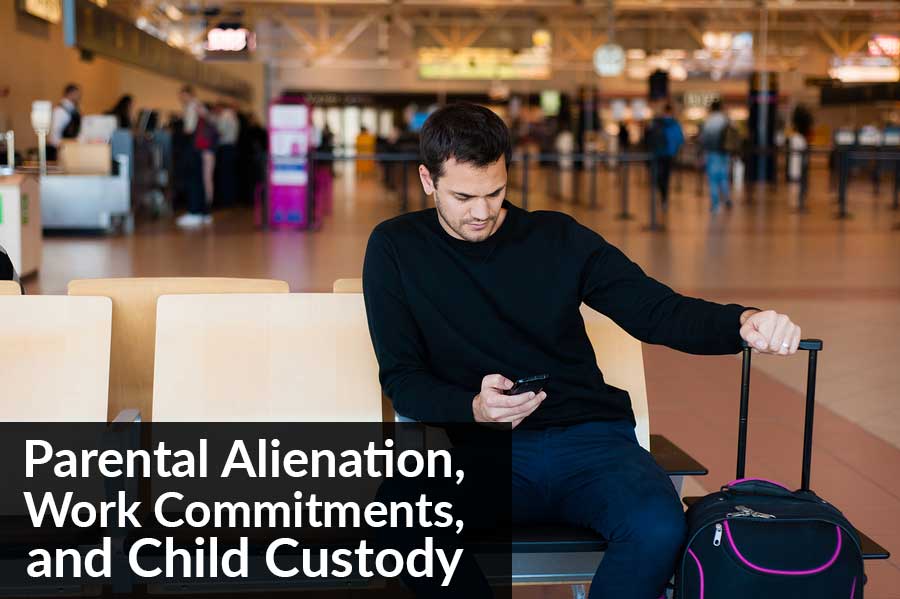How Age Plays a Role in Child Custody Cases
A common question we are asked by clients who are dealing with child custody in their case is, “Does the court take into consideration age when deciding?”
In this article, we’ll address the typical guidelines based on a child’s age. Obviously, the court doesn’t have to adhere to any unwritten standard as it has full discretion based upon the unique circumstances of each case. Remember, in California family law, the child’s best interests take priority over everything else.
Ages 0-2
For children of this age group (infants and toddlers), the separation time from both parents should be very minimal. This will help reduce the child’s anxiety and maintain the bond between the child and parents. The implication of extended separation time with children in this age group is related to their lack of long-term memory. An infant or toddler can lose an attachment with a parent quickly if there is not a consistent and frequent level of contact.
In our experience, children between the ages of 1.5 – 2 years experience the highest degrees of separation anxiety. For that reason, it is important that a child at this stage see each parent frequently to maintain their bond and reduce overall anxiety during this stage.
A few factors the court will examine/promote, especially in cases where custody isn’t evenly split:
- The degree of attachment between the parent and child. In a situation where a parent and child have not seen each or had contact for an extended period of time, new contact should resume gradually so that the child adjusts well to the parent.
- Care information regarding a child’s diet, any medications, and daily routines should be shared between the parents. This helps prevent any lapse in care and normalcy for the child, which otherwise can add additional stress and anxiety.
- It is recommended that the custodial parent deliver the child to the other during an exchange of visits. However, if your relationship with the Mother isn’t amicable or on good terms, a babysitter or another person who the child is comfortable with can perform the exchange. It’s important that the other individual not hold any hostility toward the parent, or, at least be able to keep it internalized during the transition. During the exchange, it’s best to keep it short without any unnecessary delay. The addition of a security item that the child holds close should be included – for most, this can be a toy or stuffed animal.
- Contact days between the noncustodial parent and child should be consistent. This is sometimes easier said than done especially when there is a great distance between the parent and the child. If a parent does not reside nearby and needs to fly or has job commitments that prevent him or her from exercising consistent visitation, accommodations should be made in attempt to gain any level of consistency. Worst case scenario puts inconsistency better than no visitation at all.
Ages 3-5
In our experience, children within the 3-5 age range can form deep attachments with their parents. At the same time this age group can develop the same or similar attachments with other adults, specifically those who care for them on a regular basis (babysitters, nannies, etc).
The promising news, especially when dealing with custody, is their ability to tolerate periods of separation. However, the common factor they do share with their younger counterparts is the need for structure, frequency, and consistency.
- The 3-5 age group can spend overnights with each parent, but schedules consisting of a week on/week off are highly discouraged due to the detachment that can occur with this group (in as little as a week’s time). Keeping in mind the child’s best interest, the alternating weeklong schedules are avoided.
- If your relationship with the other parent isn’t amicable, visible conflict between yourself and the child’s other parent should be avoided at all costs. A child’s witnessing of conflict can cause anxiety, and can even push a child to regress to their past infant or toddler behavior.
- Our experience in dealing with child custody and visitation illustrates the fact that children thrive in an environment that is structured by routine. While each parent does not have to follow an identical routine in their respective household, the children will experience less anxiety when away from one parent if day to day activities are loosely followed.
Ages 6-11
We’ve witnessed children in this range handle back-and-forth visitation between each parent’s home with relative ease. At the same time, some children are suited better by spending more time at one home instead of 50/50 split. From the court’s perspective, age is only one factor when determining whether or not to schedule the “week on, week off” scenario for children aged 6-11. The maturity of each child, in addition to the bond between the child and each parent, are just as important as age. Our attorneys have seen 7 year olds handle a week on / week off schedule better than some 11 year old kids. With that being said, one blanket approach won’t be beneficial for all.
Aside from age and maturity level, the court also looks at factors such as school schedules, sports or extracurricular activities, and parent work schedules when determining the appropriate custody scheduling. Guidelines and recommended care for younger children can apply to this age group as well, depending on the situation.
Ages 12-18
In our experience, children in this range are developing their own independent identities. This group is very immersed in their activities and relationships outside of each parent’s household. Even though older and more independent than toddlers and infants, they can be more difficult than the young ones when it comes to custody cases. The typical teen has developed (or in the initial stages of developing) their own opinions, including their relationship with their parents and the relationship the parents have with each other.
Most judges encourage parental flexibility when working with children in this age group. Flexibility leads to not only good co-parenting, but also the continued emotional health of the children because they are likely exposed to less conflict.
We’ve seen many cases where this age group develops feelings of anger or resentment at one or both parents for causing the divorce and the resulting split of the family. These feelings can are mostly expressed behaviorally, including acts of defiance. Parents must take great care with children in this group to make sure that they are not used as leverage in custody negotiations or court. Instead, parents should have ongoing contact with each other and set up guidance and rules, as well as standards for behavior. As the children get older, their opinions about living arrangements will likely matter more. While parents should make the final decisions, the child should be allowed to have a voice in the process as well.
Parents are encouraged to keep their own issues separate from their teens, and avoid using them as messengers. In our experience, parents do this often with older children and it’s oftentimes unintentional. It’s important that children not be placed in the middle of parental communications, as doing so will likely cause confusion and potential resentment of one or both parents. This can ultimately lead to withdrawal and the avoidance of quality time. We suggest that parents remain sensitive to their children’s feelings and encourage ongoing contact with both parents, even in a situation where resentment toward one parent exists. Resentment toward one parent, encouraged by the other, leads to struggles with recovery and can cause detrimental effects on the child’s relationships as they progress through adulthood.





